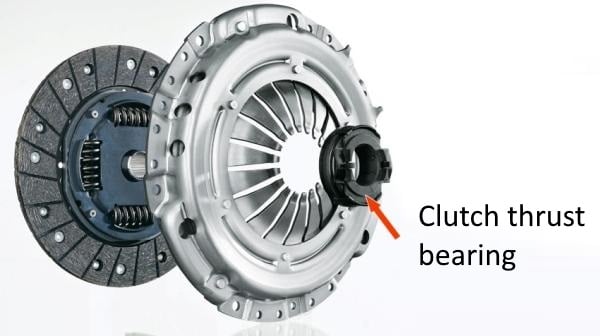What’s a Clutch Thrust (Release) Bearing, Anyway?

If you’ve ever had trouble shifting gears, or wondered what that weird grinding noise is when you press your clutch pedal — you’re probably dealing with something called the clutch thrust bearing (or clutch release bearing, throw-out bearing… ask five people, you’ll get five names). It’s a small round bit that sits on the clutch assembly, connects up to the clutch fork, and gets shoved around every time you stomp on the clutch.
Picture you’re driving down Victoria Street in Hamilton, or maybe easing over one of those potholes out Rototuna way, clutching in and out in bumper-to-bumper traffic. Every time your clutch pedal goes down, this bearing pushes against the pressure plate’s springs. That lets you swap gears without crunching. Simple job, but if that bearing starts to pack in, you’ll feel it — and sometimes hear it loud and clear.
Why Do Clutch Bearings Give Up?
For most cars in NZ, these bearings aren’t something you swap out every service. They’re pretty tough and often last the whole life of the car. But with all the stop-start nonsense between, say, Te Awamutu and Frankton during school run hours, they do get a hiding. Older cars like a Suzuki Swift or that trusty old BMW 320i coming in from Tamahere might see theirs wear out just from years of use. Heat, cold, clutch dust, city traffic, you name it.
A big killer of these is not adjusting your clutch cable (especially older models, e.g. Mazda Demio, Nissan March with cable setups). If your cable’s too tight, that thrust bearing never gets a breather — it’ll spin constantly, and before long, it’ll get noisy and rough. We see it a fair bit with folks who’ve had their clutch cable ignored for years. Need yours checked? Here’s a link to our clutch cable adjustment services in Hamilton.
There’s also a bit of driver habit in the mix. If you ride the clutch, skip gears (like going from third straight down to first at the roundabout near Chartwell), or just generally don’t start in the right gear — you’ll chew through your thrust bearing quicker than normal.
Signs Your Clutch Thrust Bearing’s Stuffed
- Weird noises: Squealing, grinding, whining when you press the clutch. Classic sign you’ve got bearing trouble.
- Vibration in the pedal: You might feel a shake or thump when you push the clutch down. Not normal, trust us.
- Gear shift grief: If it’s harder to swap gears, or you hear grinding, your thrust bearing could be on its way out.
- Slipping clutch: Engine revs up but the car’s lazy to move? That bearing could be letting the clutch slip.
- Clutch drag: Trouble getting into neutral or reverse, even with pedal down? Drag from a dodgy bearing is likely.
- Strange bite point: If the clutch grabs way high or low compared to normal, give us a call for a check.
Why Get Your Clutch Thrust Bearing Replaced?
- Smoother shifting: You want easy gear changes, especially with all the roundabouts out in Cambridge or the slow crawl down Peachgrove Road. A tidy new bearing makes the difference.
- Noises gone: No more embarrassingly loud squeaks at the lights outside The Base.
- Stop bigger issues before they start: Fixing this early can save you from clutch or gearbox failure. Handy if you rely on your car to get the family across to Morrinsville or out to work at Waikato Hospital.
- Better performance, safer car: A happy clutch means quicker response and more confidence, whether it’s an Audi A3, Toyota Corolla, or a Honda Shuttle hybrid zipping around raglan road in any season.
We see all sorts through the workshop — from zippy European hatchbacks, to big old Asian 7-seaters, and everything in between, clutch trouble doesn’t discriminate! Whether you’re a dad running late for school pickup, or a student wrangling a hand-me-down Peugeot 206, we’re here to help.
Suspect your clutch thrust/release bearing is playing up? Bring it in and let one of our technicians have a look. For reliable clutch release bearing replacement in Hamilton, book in with Grimmer Motors.

